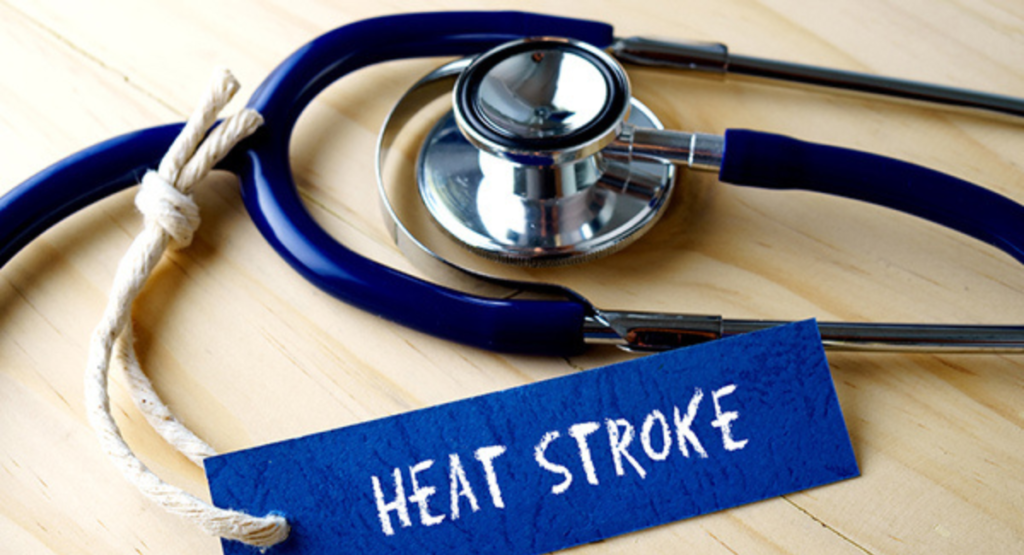As the summer sun beats down, it’s crucial to stay informed about the dangers of heat stroke. Whether you’re an avid athlete, outdoor enthusiast, or simply enjoying a day in the sun, sun stroke can strike unexpectedly and lead to serious consequences if not treated promptly. In this comprehensive guide, we’ll delve into what heat stroke is, its symptoms, proper treatment methods, and essential prevention strategies.
What is Heat Stroke?
Heat stroke, also known as sunstroke, is a severe heat-related illness characterized by a dangerously elevated body temperature (typically above 104°F or 40°C) accompanied by neurological dysfunction. It occurs when the body’s temperature regulation mechanisms fail to adequately dissipate heat, leading to a rapid rise in core body temperature.
Symptoms of Heat Stroke
Identifying the symptoms of heat stroke is crucial for timely intervention. Common signs and symptoms include:
High Body Temperature: A body temperature of 104°F (40°C) or higher is a hallmark symptom of sun stroke.
Altered Mental Status: Confusion, agitation, hallucinations, or coma may occur due to neurological impairment.
Flushed Skin: The skin may feel hot and dry, or alternatively, moist and sweaty.
Rapid Heart Rate: Tachycardia, or a rapid heartbeat, is often observed in individuals experiencing sun stroke.
Headache: Intense throbbing headaches are a common complaint among heat stroke victims.
Nausea and Vomiting: Gastrointestinal symptoms such as nausea, vomiting, and diarrhea may occur.
Muscle Cramps: Painful muscle cramps, particularly in the abdomen, arms, or legs, may develop.
Proper Treatment for Heat Stroke
Prompt treatment is essential in managing heat stroke and preventing complications. Here’s what to do if you suspect someone is experiencing sun stroke:
Move to a Cool Environment: Immediately move the individual to a shaded or air-conditioned area to lower their body temperature.
Remove Excess Clothing: Loosen or remove any unnecessary clothing to aid in the cooling process.
Hydrate: Offer cool water to drink, but avoid beverages containing alcohol or caffeine, as they can exacerbate dehydration.
Cooling Measures: Apply cold compresses, ice packs, or immerse the person in cool water to help lower body temperature. Focus on areas with abundant blood flow, such as the neck, groin, and armpits.
Monitor Vital Signs: Continuously monitor the person’s vital signs, including body temperature, pulse rate, and mental status, while awaiting medical assistance.
When to Seek Medical Help
While initial first aid measures are crucial, seeking professional medical assistance is imperative, especially in severe cases of heat stroke. Call emergency services or seek medical attention if:
- The individual’s body temperature remains elevated despite cooling efforts.
- They exhibit signs of confusion, seizures, or loss of consciousness.
- Symptoms persist or worsen over time.
- They have underlying health conditions that may complicate heat-related illnesses.
Prevention Strategies
Prevention is key in avoiding heat stroke and staying safe during hot weather. Follow these preventive measures to reduce your risk:
Stay Hydrated: Drink plenty of fluids, particularly water, before, during, and after outdoor activities.
Avoid Peak Sun Hours: Minimize outdoor activities during the hottest part of the day, typically between 10 a.m. and 4 p.m.
Dress Appropriately: Wear lightweight, loose-fitting clothing, and opt for a wide-brimmed hat and sunglasses to protect against sun exposure.
Take Regular Breaks: Pace yourself during outdoor activities and take frequent breaks in shaded or air-conditioned areas.
Know Your Limits: Listen to your body and recognize the signs of heat exhaustion, such as heavy sweating, weakness, and dizziness, before they progress to sun stroke.
Conclusion
Heat stroke is a serious medical emergency that requires prompt recognition and intervention. By understanding its symptoms, proper treatment methods, and preventive strategies, you can protect yourself and others from the potentially life-threatening effects of extreme heat. Stay informed, stay hydrated, and stay safe this summer season.
We are India’s first comprehensive continuum care provider. We provide multidisciplinary out of hospital care to acute and post-acute and chronically ill patients at our critical care facilities and your home.

